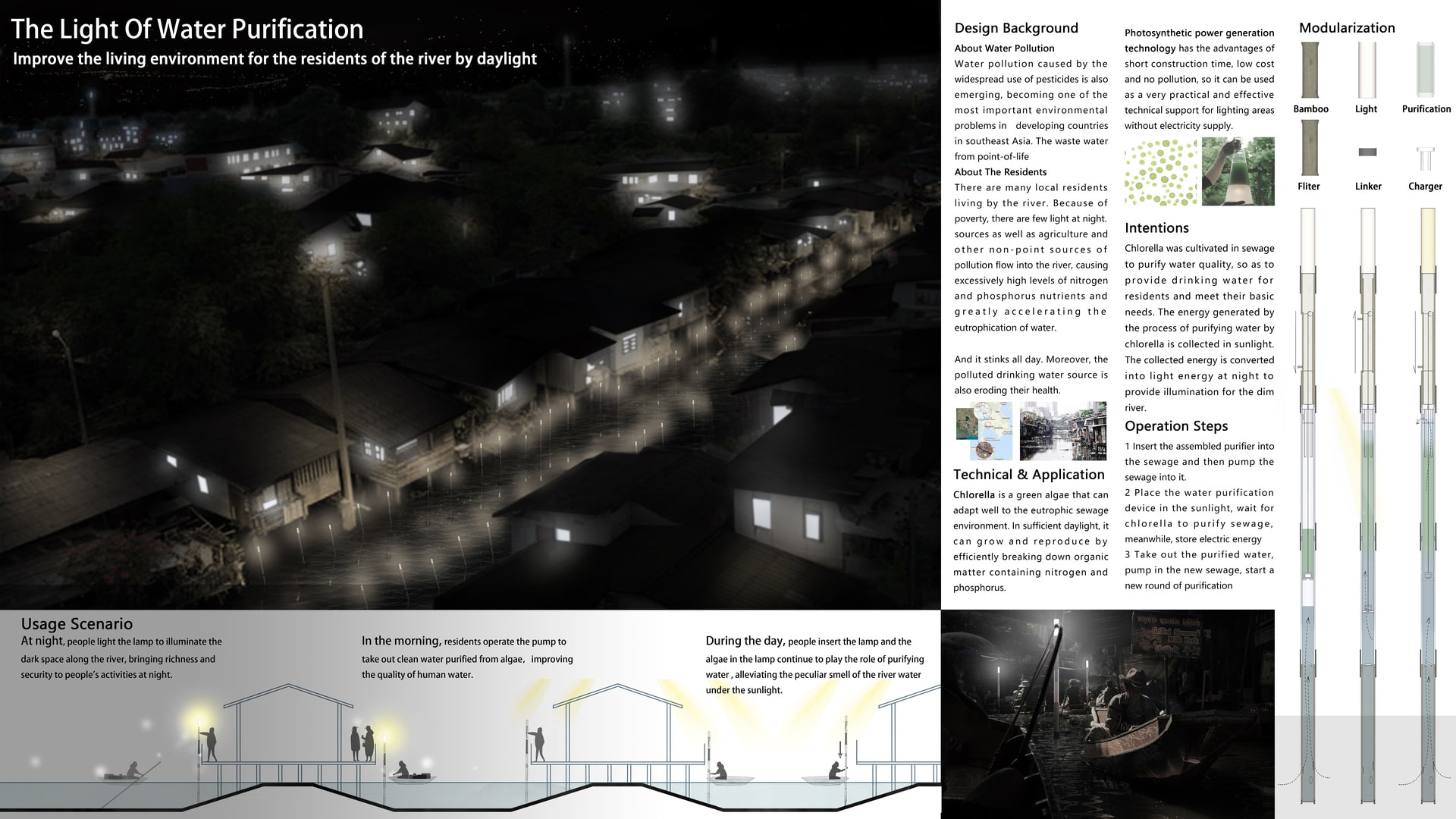Project Description
Nowadays, Developing country are facing numerous problem in its economy development progress. Water pollution caused by the widespread use of pesticides is also emerging, becoming one of the most important environmental problems in developing countries in southeast Asia. The waste water from point-of-life pollution sources as well as agriculture and other non-point sources of pollution flow into the river, causing excessively high levels of nitrogen and phosphorus nutrients and greatly accelerating the eutrophication of water. About The Residents There are many local residents living by the river. Because of poverty, there are few light at night. And it stinks all day. Moreover, the polluted drinking water source is also eroding their health. Therefore, from the perspective of sunlight utilization, we try to find a sustainable intervention strategy to improve local living conditions. Chlorella is a green algae that can adapt well to the eutrophic sewage environment. and it can grow and reproduce by decomposing organic matter containing nitrogen and phosphorus. In sufficient daylight, it can grow and reproduce by efficiently breaking down organic matter containing nitrogen and phosphorus. Photosynthetic power generation technology has the advantages of short construction time, low cost and no pollution, so it can be used as a very practical and effective technical support for lighting areas without electricity supply. Through the combination of chlorella, photosynthetic power generation technology and bamboo, a low-cost, temporary and detachable lighting device is obtained, which has the function of purifying water at the same time. This not only provides them with some basic living security, but also provides the possibility of evening activities. The device is designed according to the shape of bamboo, and the combination of different modules is realized through "bamboo joint". Considering the local use of bamboo to build houses, bamboo was chosen to be combined with this device. This project has advantages in material acquisition, cost, location, operability and temporality. Chlorella was cultivated in sewage to purify water quality, so as to provide drinking water for residents and meet their basic needs. The energy generated by the process of purifying water by chlorella is collected in sunlight. The collected energy is converted into light energy at night to provide illumination for the dim river. The following is a more detailed description of our design. Operation Steps: 1 Insert the assembled purifier into the sewage and then pump the sewage into it. 2 Place the water purification device in the sunlight, wait for chlorella to purify sewage, meanwhile, store electric energy 3 take out the purified water, pump in the new sewage, start a new round of purification Usage Scenario: At night, people light the lamp to illuminate the dark space along the river, bringing richness and security to people's activities at night. In the morning, residents operate the pump to take out clean water purified from algae,improving the quality of human water. During the day, people insert the lamp and the algae in the lamp continue to play the role of purifying water , alleviating the peculiar smell of the river water under the sunlight.
